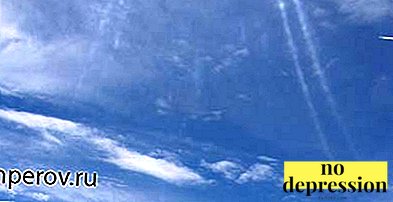To help a person with his psychological problems, for starters need to understand how they arise.
Moreover, different areas of science have different views on this: in accordance with the theories of the personality that underlie them.
One of them is the humanistic one, which became the ideologues of Carl Rogers and Abraham Maslow. On the theory of personality Maslow talk further.
Brief background

Until the beginning of the twentieth century, all psychology was reduced to the closure of patients in certain institutions and the challenges of priests (optionally, exorcists). Then came the grandfather Freud.
He stated that he was sitting somewhere inside a person. It is unconsciousand it is possible to help with spiritual problems by pulling out this unconscious, having survived and thought over.
Where it came from was not specified, so psychologists actively used the method of psychoanalysis, but could not substantiate it. And science prefers a clear explanation.
In addition, most of the disorders in Freud are due to repressed sexual experiences, and people really did not want to be the ones who are governed by just the sexual instinct.
The theory of behaviorism, behavioral psychology, which soon appeared gone near. Her followers believed that the human psyche - a set of reactions to stimuli (fortunately, not only sexual). An explanation was required that would make a person a little more human.
They became the humanistic theory. Carl Rogers stated that the person has a unique experience - “phenomenal field”, which distinguishes it from others.
Problems begin when this field does not coincide with reality. Maslow developed these ideas.
Personality structure

According to Maslow, a person cannot be divided by highlighting some kind of I, Super-I and It. He is what he makes himself, his task - find your own meaning in the world around you.
Reality for a person is not objective, but subjective - it is as it feels and perceives it.
it existential approachwho prioritizes the existence of the individual. Moreover, the scientist went further than his predecessors, who studied people with disabilities. He preferred to consider the experience of prominent personalities.
Maslow identified several levels of need:
- physiological (sleep, food, roof on the head),
- need for reliability (safety, lack of fear of failure),
- social - the need for belonging and love (to belong to a social group, to be accepted by it and loved),
- need for respect (competence, respect, recognition, approval),
- the need for development (cognitive, spiritual, aesthetic needs and their pinnacle - self-actualization).

Step by step, step by step, the person goes to the highest need: self development.
However, from 2 to 5 percent of people reach this stage.
Actually, this is what he is most famous for: Maslow’s pyramid of needs can be found in any textbook on psychology, marketing or personnel management, since it has become the basis of the theory of motivation.
Although he himself never presented his theory in the form of a pyramid: for the first time it was done five years after his death.
The views of the scientist himself are somewhat broader and have undergone changes in the development process. However, now we will focus on the understanding that is most common in modern society.
Maslow's Theories
Motivations
Abraham argued that all individual needs are located strictly hierarchical. The needs of the lower order are satisfied - the needs of the higher one arise.

And the motivation system, which is so widely used in personnel management, is based on the desire to satisfy them.
Even the most modest salary satisfies physiological needs person: no one has the right to pay less than the subsistence minimum.
Since this minimum will be paid anywhere, you will not be able to keep the employee with only money: you will have to satisfy his higher needs, and this is stability and security.
To do this, you need a salary give back regularly without delayto have confidence. But this is also done by the majority of employers, so we are rising to a higher level - social needs.
The key is that not enough money is needed to meet the lower levels of needs, so why pay more if you are interested in working with higher levels of satisfaction?
This communication: relationships within the team, relationships with customers and so on.
it need for respect: praise and recognition of merit (chocolate medal, photo on the honor roll or in the corporate newspaper, on the company's website, etc., conversations with the boss, who convinces of irreplaceability).

It works even better than a pay rise.
Finally, the highest level - need for development. The promise of career growth, expansion of responsibilities, etc.
Notice what most job postings look like?
They are frightening all levels of the pyramid: “Stable salary, friendly team, career growth”.
Main points motivation theory:
- All motives are hierarchical.
- Higher motives are insignificant, while lower ones are not satisfied.
- The higher the level of motive, the longer you can postpone their implementation.
- The higher the level of need, the more effort a person is willing to put in to meet it.
Needs pyramid actively used in advertising. Any movie rests on the satisfaction of any need.
For example, coffee is advertised not as a drink for vigor, but as a means of communication, showing stories, how people meet over a cup of coffee, etc. Thus, emphasis is placed on the satisfaction of social needs, and the one who lacks communication will run for this coffee.
Based on the above, the cheaper the product, the lower the levels of need can be relied on, the more expensive - the higher.
Humanistic

As we have already said, in the views of Maslow himself everything is somewhat more complicated.
Its hierarchy of needs quickly criticized.
It does not at all explain the existence of ascetics who go to the mountains and meditate until enlightenment: these individuals thus put the need for development higher than for security.
In the mountains, after all, a wild animal can attack. Or extreme living conditions when even the need for food is not satisfied.
In besieged Leningrad, some kept their favorite pet parrots, although they should have let them go to the soup right away - there is no food. Others, by the way, did just that.
Thus, the hierarchy of needs of the entire spectrum of behavior does not explain - there is something else. The scientist suggested that needs evolve with age, but this theory has not been confirmed.
As a result, Maslow dwelt on the fact that he divided all needs into 2 groups: deficient and existential.
Task first fill a certain deficit - in a dream, food, sex, intercourse, that is, to ensure survival. But the latter are connected with development, with such activity, which is aimed at moral satisfaction, at the search for high goals and their achievement.
A little later he added concepts metamotivations. They stand in direct connection with the eternal notions of good, beauty, truth.
Self-actualization

According to Abraham’s theory, an individual tends to the highest step of the hierarchical pyramid - development, self-actualization, that is, the deepest concept, the adoption and use of their own capabilities.
This is the very search for the meaning of life, having found that a person becomes happy, the state in which he does what he wants, and not what others expect of him.
Features self-actualized personality these are:
- She knows and understands life, and does not hide from her behind the mechanisms of psychological defense.
- She accepts both herself and others, allowing them to have their own point of view and not persuading.
- He is fond of his favorite business and is focused on solving problems.
- Independent of the social environment.
- Can understand others, attentive to them and benevolent.
- Open to new experiences.
- Distinguishes between good and evil, does not consider that the end justifies the means.
- Behaves naturally and spontaneously.
- Shows ability, creates in work, relationships, love.
- Ready to solve problems, to understand the difficulties.
However, as we have said, only 2-5% of people are as follows.
This is due adverse social conditions, doubts in one’s own abilities, so inherent in many individuals, the excessive influence of the need for security, which forces one to avoid even the slightest risks, even if they satisfy higher needs (a tightening “comfort zone” that is so difficult to get out of).
Exists several ways of self-actualization:
- Selfless experience of what is happening with full concentration.
- The idea of life as a permanent choice.
- Listening to yourself, having your “I”, and not imposed.
- Take responsibility and be honest with yourself.
- Do not depend on others - otherwise express an opinion will not work.
- Identify your psychological defenses and overcome them.
- To perceive self-actualization not as an end point, but as a constant process.
- Fully relive the moments of insight, do not forget about them - these are the moments of self-actualization.

Maslow's theory was a big step forward in psychology, because she recognized the inner world of man, made him something more than an animal driven by the desire for sex.
However, her fate is indicative: in the modern world, humanistic theory, which allows one to live in harmony with oneself and the world, has been used to increase staff productivity and to “pair up” completely unnecessary things.
Personality development in the theory of Abraham Maslow:



